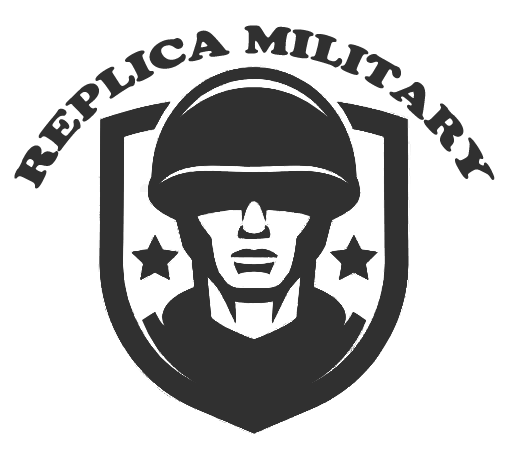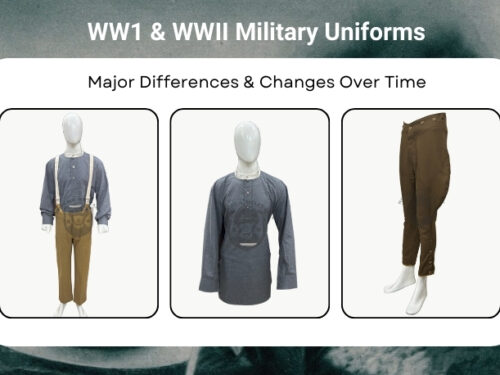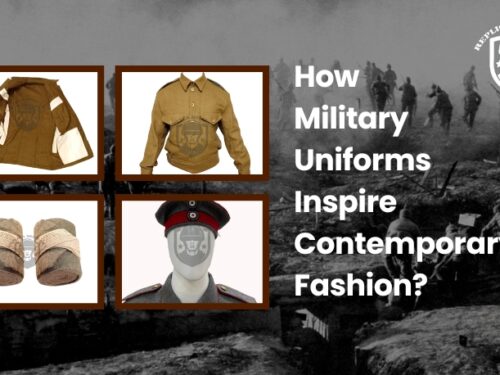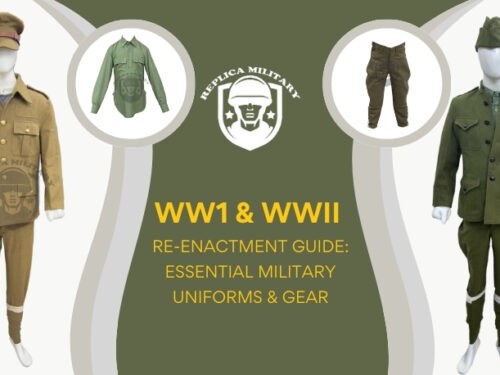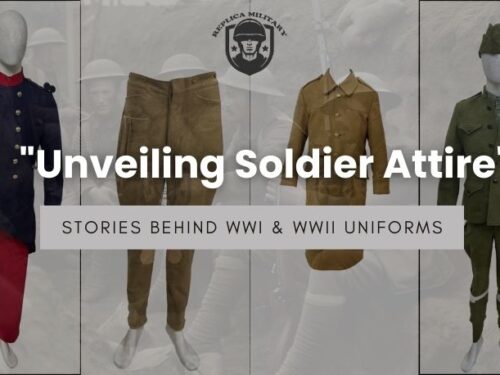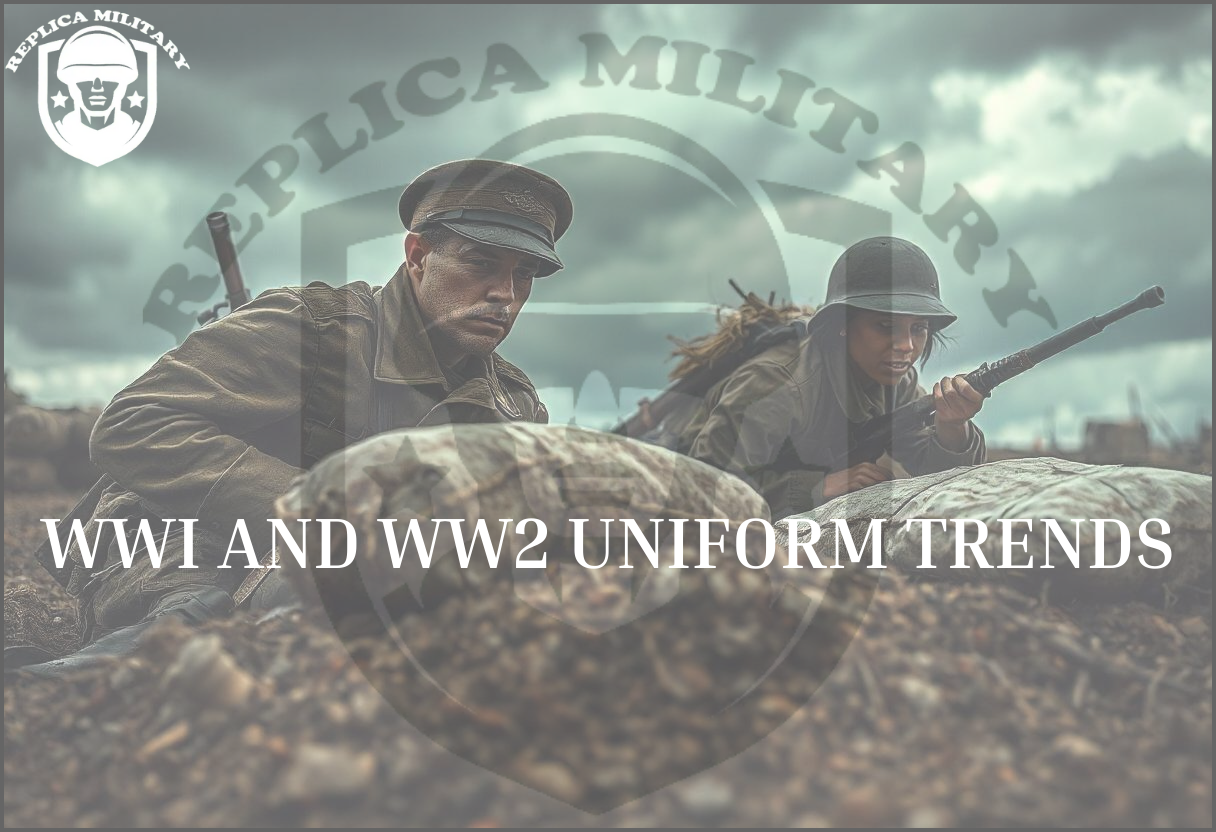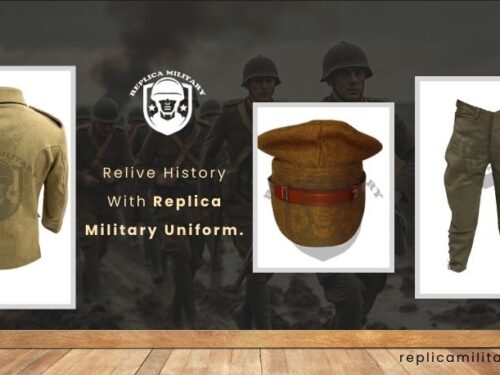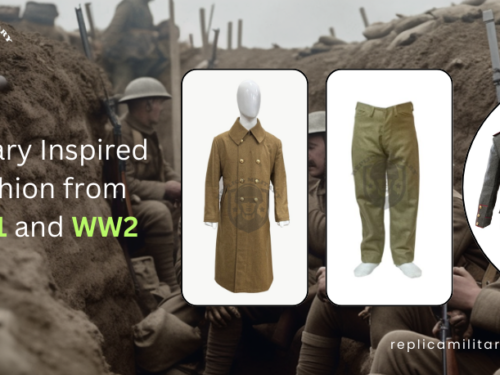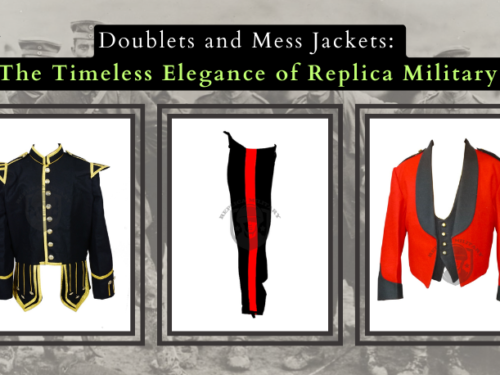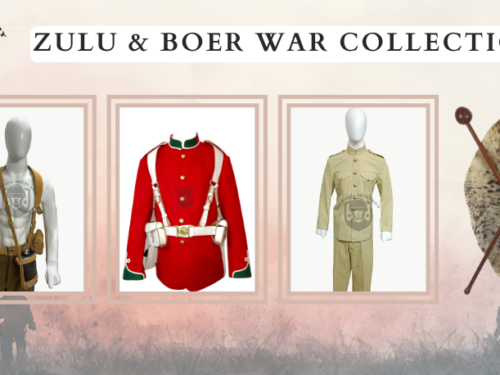The Most Iconic WWI and WWII Military Uniforms
World War I and World War II (WWII) were turning points in history, transforming the world in ways too numerous to count. One of its multiple legacies is the soldiers’ uniforms, which continue to be a symbol of courage, strategy, and national identity. The uniforms were not only military but also an expression of technological innovations, tactical requirements, and cultural aspects of their nations.
For historians, reenactors, and collectors, it is imperative to know the most legendary WWII military uniforms. Whether you want to purchase a Zulu War uniform online, a WWII British P37 Battledress Jacket Tunic, or WW1 German uniforms, this guide is an overview of some of the most legendary military uniforms and what they mean.
1. WWII British P37 Battledress Jacket Tunic
One of the most iconic WWII uniforms was the British P37 Battledress Jacket Tunic. Introduced in 1937, the uniform became the standard British and Commonwealth forces combat gear during the war.
Key Features:
Constituted from a wool serge fabric, for its strength and warmth.
Short, close-fitting cut to enable better mobility.
Worn with a webbing belt and utility pouches for carrying necessary equipment.
The WWII British P37 Battledress Jacket Tunic was instrumental in fighting battles in Europe, North Africa, and the Pacific. It is still popular among reenactors and collectors of military artifacts today because of its historical importance The Most Iconic WWI and WWII Military Uniforms.
2. WW1 British Soft Trench Cap
Though linked with WWI, the British Soft Trench Cap was still used during WWII, especially by officers and some regiments. This cap was created for comfort and functionality and replaced the stiff service caps of earlier trench warfare.
Key Features:
Constructed of khaki wool with a soft peak.
Folded and easily carried.
Frequently decorated with regimental badges.
If you’re searching for WW1 British Soft Trench Caps to use for reenacting or collecting, they can be found easily in online military surplus stores.
3. WW1 American Army Full Uniform & WWII Adaptations
The United States Army adapted its uniforms during WWII, taking cues from WW1 American Army Full Uniforms. The M-1941 and the M-1943 field jackets became the standard issue for American troops.
Key Features:
M-1941: Lightweight with cotton shell and wool lining, suitable for temperate climates.
M-1943: Enhanced version with more robust, water-resistant material.
Standard wool service trousers and boots.
These uniforms came to epitomize the U.S. Army’s campaigns in Europe, the Pacific, and North Africa. Hobbyists can still source WW1 American Army Full Uniforms and their WWII equivalents in replica military gear shops The Most Iconic WWI and WWII Military Uniforms.
4. WW1 AIF Uniform & Its WWII Evolution
The WW1 AIF Uniform (Australian Imperial Force) was created for rough battlefield conditions, and the same designs were utilized in WWII.
Key Features:
Heavy wool was used to make it durable.
Slouch hats were the most commonly used among Australian soldiers The Most Iconic WWI and WWII Military Uniforms .
Webbing equipment was used to carry additional ammunition and supplies.
Australian soldiers in WWII frequently used this uniform’s modified versions, especially in the Pacific theater, where jungle combat needed lighter and more ventilated materials.
5. WW1 Grey Back Collarless Shirt
The WW1 Grey Back Collarless Shirt was a standard issue shirt for soldiers, including WWII servicemen. The shirts were normally issued as under-shirts but frequently showed through because of combat conditions.
Key Features:
Constructed from tough grey cotton material.
Collarless to be more comfortable.
Worn under tunics or on its own during warm weather.
Replica WW1 Grey Back Collarless Shirts are easily found now and are popular with historical reenactors.
6. WW1 French Army Iron Blue Overcoat
The WW1 French Army Iron Blue Overcoat was an emblem of the French military in both world wars. Although initially issued in WWI, the same style was employed in WWII.
Key Features:
Unusual iron-blue color.
Thick woolen material for winter use.
Large buttons and high collars for extra warmth.
Nowadays, collectors wishing to purchase genuine WW1 French Army Iron Blue Overcoats can find them in antique shops and online stores that deal in military equipment.
7. WW1 German Uniforms & WWII Impact
The uniforms of WWII German troops were one of the most defined and disciplined, getting inspiration from WW1 German Uniforms.
Key Features:
Field-grey woolen tunic with chest pockets.
Steel helmet M35 for maximum safeguarding.
Black leather jack boots or subsequently canvas boots.
German uniforms were also function-based with the inclusion of features such as adjustable sleeves and heavy-duty stitching for endurance. Reproductions of both WW1 German Uniforms and WWII versions are available to collectors for reenactment and historical exhibitions.
- WW1 American Army Tunic
The WW1 American Army Tunic continued to be a standard uniform piece through to WWII, particularly in ceremonial and training situations.Key Features:
Olive drab wool with excellent stitching.
Brass buttons with the U.S. Army insignia.
Worn with matching trousers and boots.
Numerous WWII officers persisted in wearing versions of this tunic, and it is a highly coveted piece among collectors of early 20th-century military attire.9. WW1 Australian Uniforms
Like their British counterparts, WW1 Australian Uniforms were functional and well-designed for fighting. These patterns influenced the equipment Australian troops wore during WWII Key Features:
Khaki wool tunic and trousers.
Leather boots and a webbing belt for equipment carrying.
Slouch hat with a side brim turned up.
If you’re a collector or reenactor, WW1 Australian Uniforms are available from specialty military surplus suppliers.10. Purchase Zulu War Uniform Online
Although not WWII in origin, some WWII reenactment groups and military history buffs look to purchase Zulu War uniforms online as an addition to their collection. Uniforms, based upon the late 19th century British campaigns in Africa, include:Red tunics and white cross belts.
If you’re in the market for original or reproduction Zulu War uniforms, some online retailers sell historical military clothing.Conclusion
WWII military uniforms are a reflection of the courage and tenacity of troops from The Most Iconic WWI and WWII Military Uniforms various countries. If you’re looking for a WWII British P37 Battledress Jacket Tunic, a WW1 American Army Full Uniform, or a WW1 German Uniform, there are numerous options out there for reenactors, collectors, and history enthusiasts alike.By examining these iconic war uniforms, we gain a deeper appreciation for the sacrifices of WWII. If you need to purchase Zulu War uniform online or top-quality WW1 Australian uniforms, make sure to look at popular military surplus stores for genuine ones The Most Iconic WWI and WWII Military Uniforms.
Shop Now for WWII & WWI Military Uniforms!
The Most Iconic WWI and WWII Military Uniforms Add a historically accurate military uniform to your collection. Check out our selection today and possess a piece of history!
